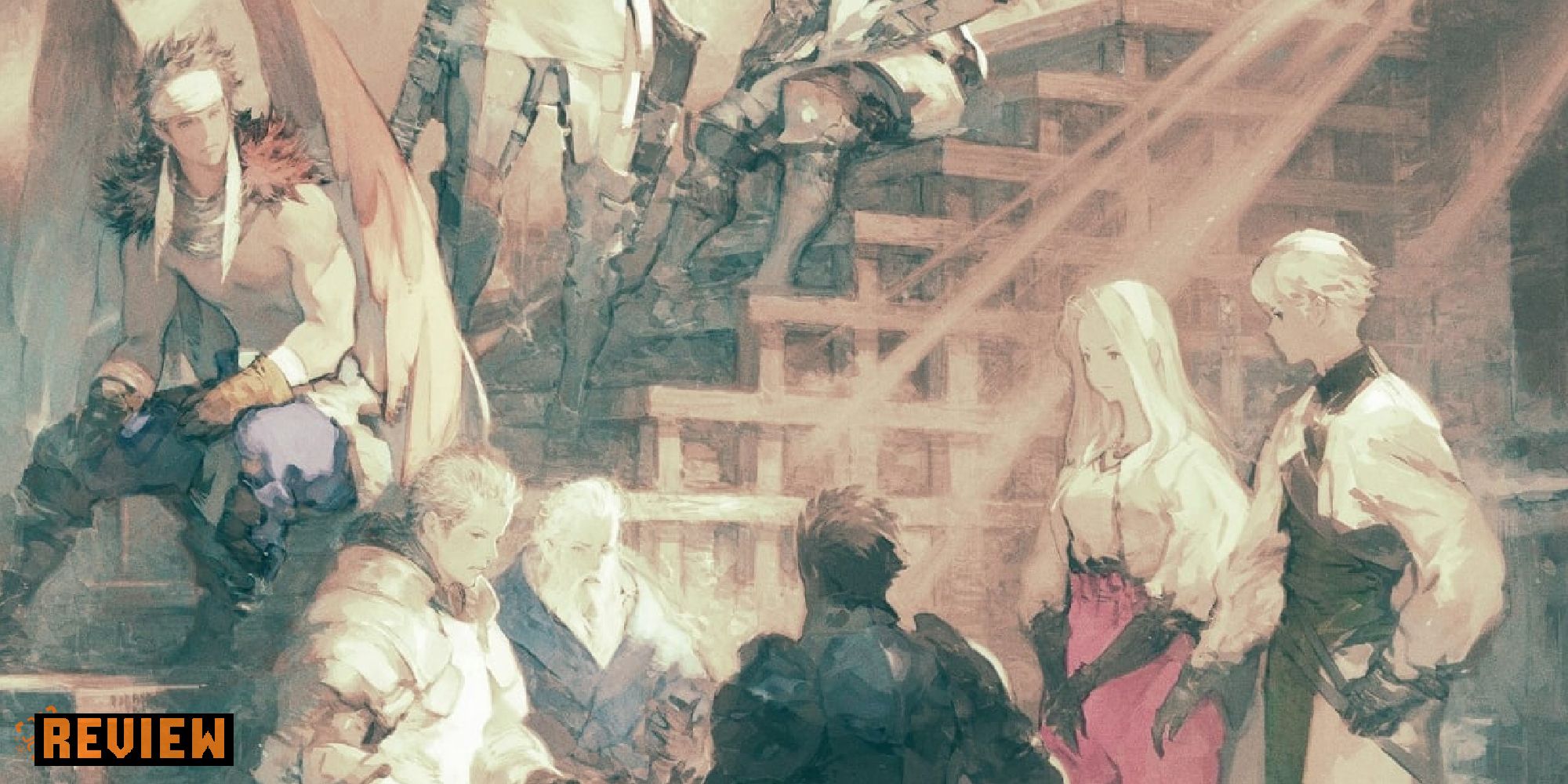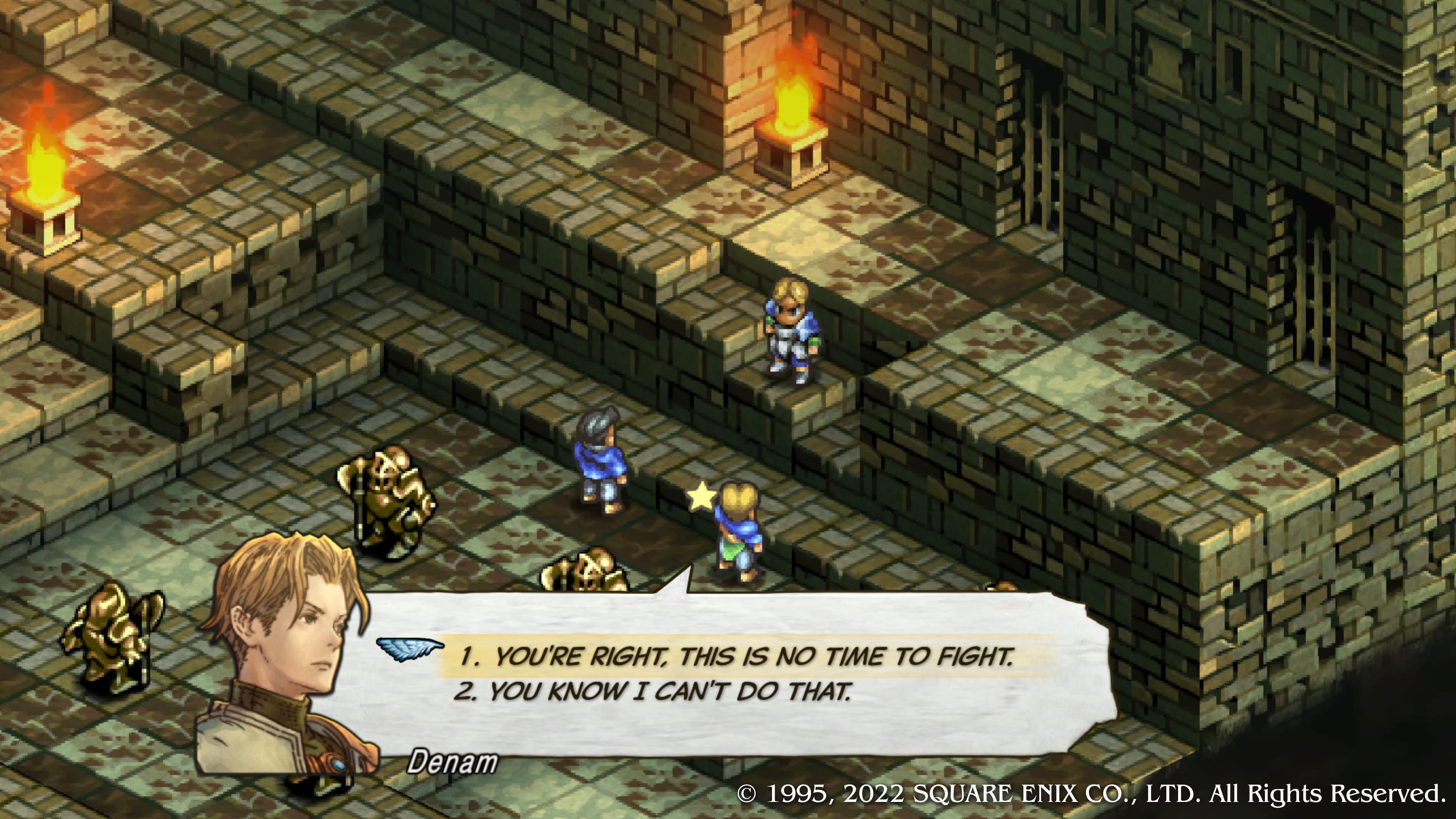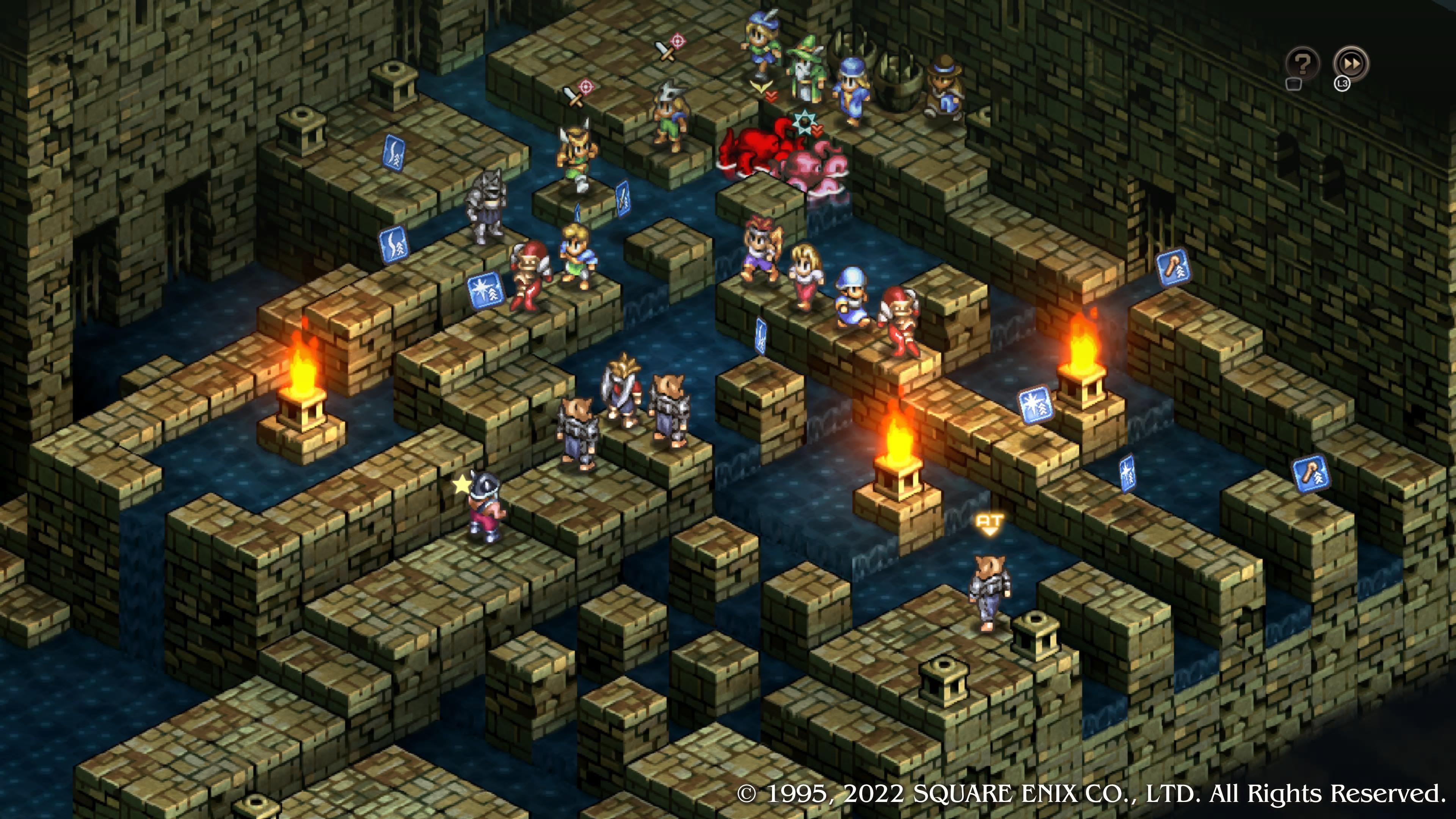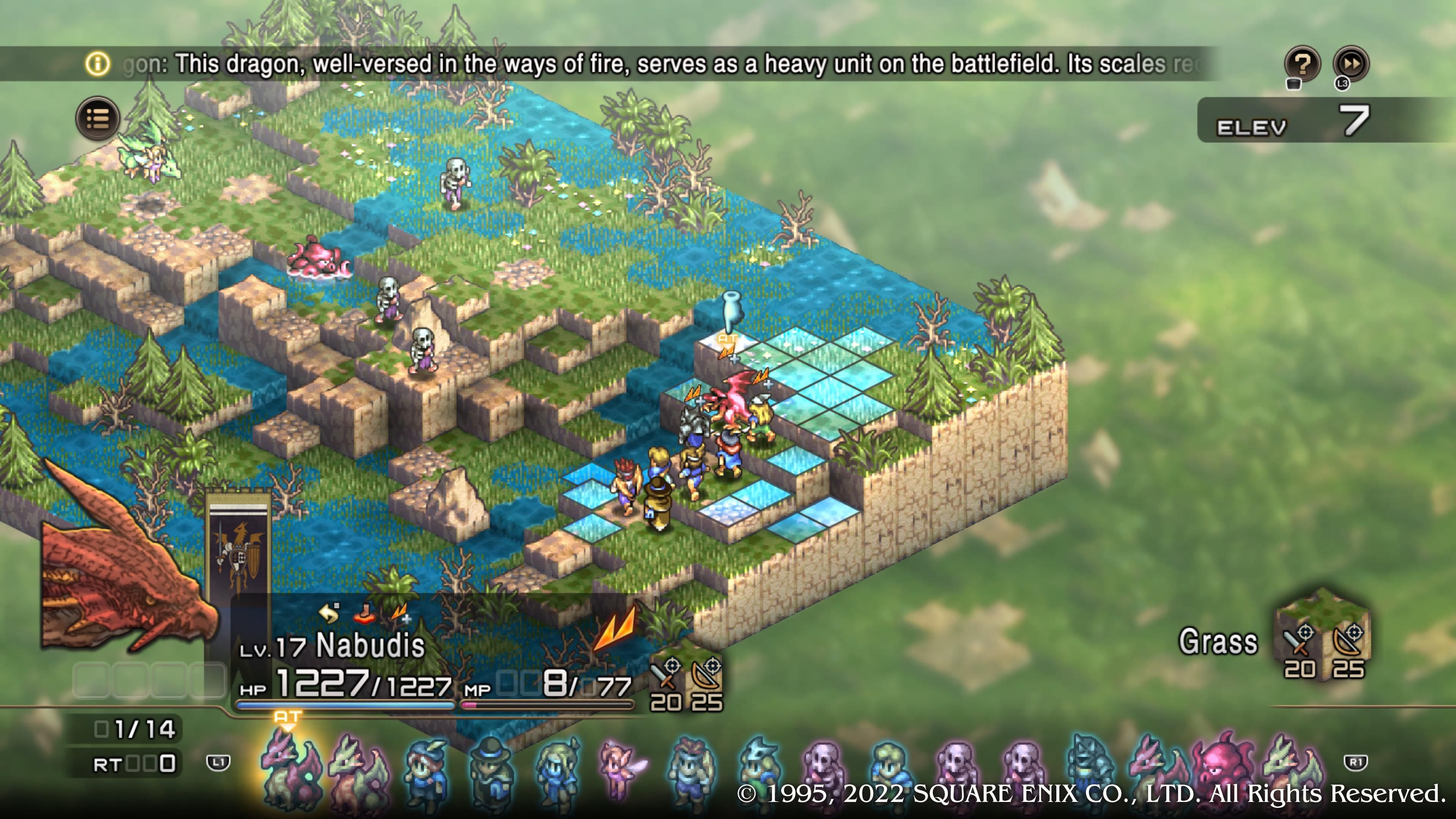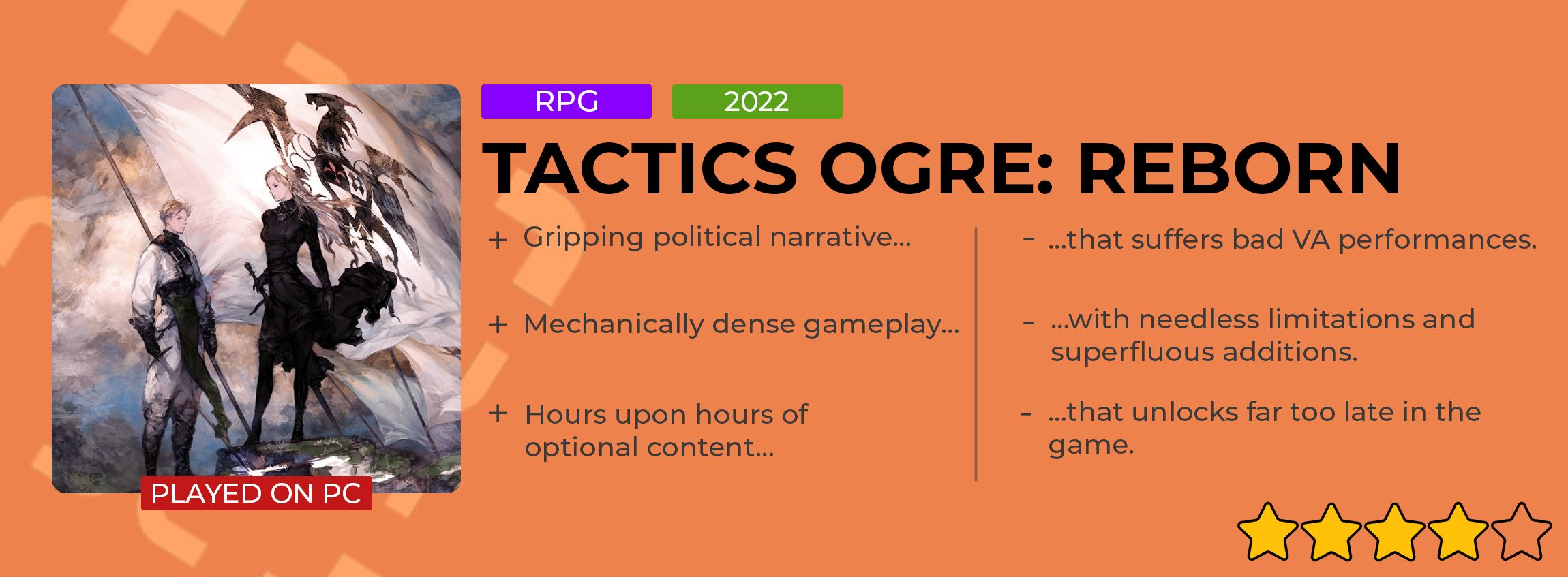How much can you improve upon a game that has already been remastered once before? Well, it turns out, quite a bit. Tactics Ogre: Reborn is a perfect example of the proper way to bring a classic video game to modern platforms - it retains its identity as an enthralling strategy RPG, but still changes enough to make it a fresh experience, even for a veteran like myself.
Tactics Ogre is a very complex game, both narratively and mechanically. It captures medieval fantasy politics brilliantly, in a way that fans of Final Fantasy Tactics will be very comfortable with and fans of Fire Emblem will be jealous of. Our protagonists are Denam, a young Walister man, and his sister Catiua. The Walister are a marginalised ethnic group being subjected to a campaign of genocide, and the opening hours see the birth of a resistance movement that grows exponentially in scale. There are alliances and unsteady treaties to keep track of, familial ties that reveal themselves at the most dramatic moments, and background plot after background plot to follow.
Tactics Ogre has always been known for how important your choices are - if Telltale made the game, messages like ‘Catiua will remember this’ would be burned into my retinas. One of the most memorable scenes in the entire Ogre series is the end of the first chapter, where Denam is forced to choose between butchering a village full of innocent kinsfolk or disobeying his lord, who considers the former plan a fantastic gambit for unity. Your choice here will set you on entirely different paths, with different challenges, recruitable characters, and feelings of guilt. Sure, you could be all moral and disobey the interminably pragmatic duke, or you could grin and bear it through the murder because that route lets you recruit the strongest character in the game.
Not every choice places you on entirely different narrative routes, but they do affect more than you might think. Like ripples, they spread to different parts of the game - refuse to save a character in an early fight, and you’ll find yourself unable to recruit her later. Say the wrong thing in a conversation with your sister, and you’ll witness a tragic moment of non-reconciliation. Tactics Ogre begs you to make backup saves, and this is a double-edged sword. On the one hand, I enjoy having agency and feeling like your choices matter; on the other, it’s bullshit that Hobyrim (read: Obi-Wan Kenobi) doesn’t join your party if you’re a bit too sorrowful about your murder trip through Valeria.
Without good writing, Tactics Ogre would come off as a schlocky attempt at a Game of Thrones rip-off (despite predating it by a year). Luckily, it’s fantastic. The political intrigue is gripping on a grand scale, with the stakes growing steadily like a boulder rolling downhill. The dialogue feels natural, never too dramatic or flowery, and is expertly crafted in its pathos. Unfortunately, the voice acting performances range in quality drastically. The weaker performances stand out like a sore thumb when compared to the stronger ones - the first time Arycelle opened her mouth, my partner turned around in his chair and asked if Lois Griffin was in this game.
Tactics Ogre is mostly excellent when it comes to gameplay. It’s always been known for its challenging difficulty curve and lack of forgiveness when it comes to important fights, and that much is true of Reborn, but there are a few new things that I’d consider missteps. First is the introduction of Union Level, which imposes a level cap that limits your ability to grind. It’s not balanced well - in the mid-game I was hitting the cap many battles before it would be raised, and in the late-game, I rarely hit the cap at all despite doing most sidequests. It’s unnecessary and is clearly a way to pit you against enemies of a higher level in the name of artificial difficulty, instead of giving those enemies better tools.
The second is the introduction of buff cards. These appear gradually on every battlefield, and picking them up gives you a significant boost to various stats. These seem good in theory - they should add a layer of strategy to your movement around the battlefield, right? In reality, they clutter up proceedings, making the game look ugly, and their boons are more incidental than strategy-defining. Worse, the game loves to start bosses off with four of these buffs, turning them into one-shotting powerhouses with nigh-unlimited MP that feel unfair to go up against.
Even with these annoying additions, the core gameplay is strong enough to keep you engaged. It’s very satisfying to see your army take on swathes of enemies, and building synergistic squads with your limited item, spell, and skill slots necessitates a depth of strategy - you can’t win through attrition as easily as you can in other strategy games. Some fights will have you panicking as you desperately try to finish off the leader to end the battle quickly, while some feel like a leisurely stroll through a particularly violent park. This feels deliberate on the game’s behalf - as frustrating as they can be to face, the narratively threatening characters are mechanically threatening, too.
The class system is refined well, with every class being viable even well into the late-game, equipment progression is logical, the ability to take advantage of environmental conditions is fantastically engaging, and archers have finally been nerfed. Sad, but necessary. One of the best additions is every battlefield having bonus objectives - these are helpful hints at things that were once kept secret, such as hidden passageways and dialogues. For example, recruiting Ocionne during her fight requires that you deploy Jeunan, a dragoon - the bonus objective for that fight? Deploy a dragoon. It’s vague enough to be helpful for those who refuse to use guides without verging on spoiler territory.
Unfortunately, one of the biggest issues with the previous incarnations of Tactics Ogre remains in Reborn - how backloaded everything is. With the middle parts being so disparate for each individual player, the majority of the optional content is relegated to the final chapter, which is essentially the same no matter which route you choose. This means you won’t get to experiment with exciting character builds or take on fun dungeons until the final hours. Until then, you’re very much on a railroad, so the sudden freedom is jarring.
Despite its quirks, this is the best version of Tactics Ogre. Gone are frustrating class-based levels and the overabundance of secrecy. Replacing them are new frustrations that are less experience-breaking. Reborn makes the grandaddy of strategy RPGs the most accessible it's ever been, and it’s not one to miss. According to Steam, I have already played 62 hours, and I already know that number will triple at a minimum by the time I’m done with it.
Score: 4/5. A PC code was provided for this review.
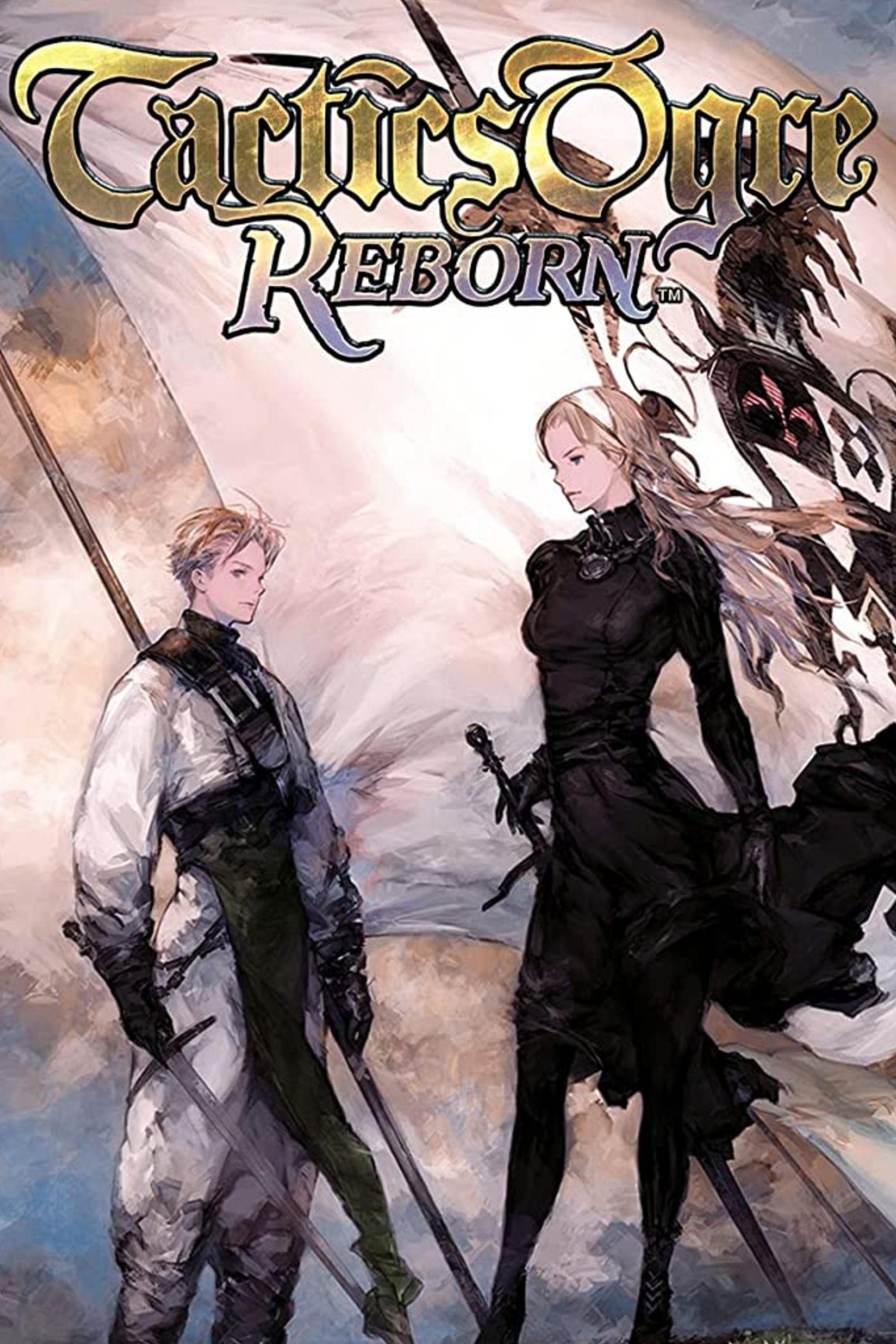
Tactics Ogre: Reborn
Tactics Ogre: Reborn is a tactical RPG where you'll need to strategize to win. It's based on the 2010 remake, with even more gameplay enhancements and additions that make it the best way to experience this strategy classic.

